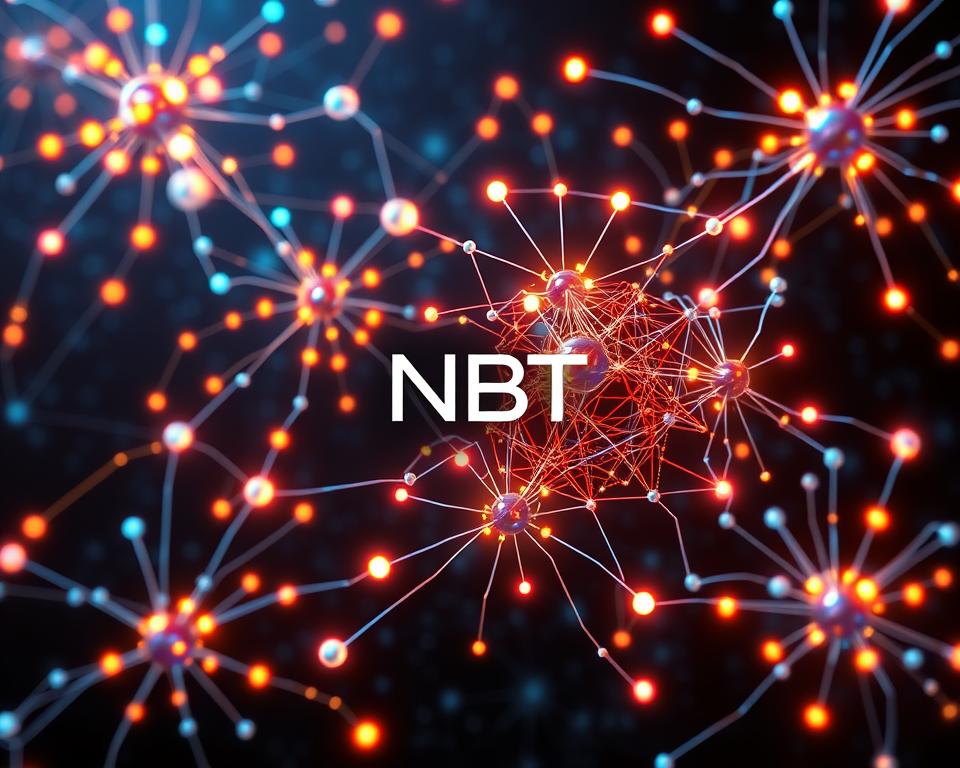Welcome to the world of AI software development. Here, cutting-edge technology meets innovative problem-solving. We’ll show you how to build intelligent, data-driven solutions that can change your business and make a real difference.
This article will be your guide through the basics of AI systems and the latest in machine learning. It’s perfect for both seasoned developers and those just starting out. You’ll get valuable insights and practical tips to use AI’s full potential.
We’ll cover the core of AI, the technologies that shape it, and the tools that help developers create smart solutions. You’ll learn about deep learning models, natural language processing, computer vision, and data preprocessing. Our goal is to give you the knowledge and skills to build the smart solutions of tomorrow.
Table of Contents
Key Takeaways
- Gain a comprehensive understanding of AI software development and its core components.
- Discover the latest machine learning frameworks and tools to streamline your development process.
- Explore deep learning models and implementation strategies for advanced AI applications.
- Learn about natural language processing and computer vision techniques to build intelligent systems.
- Dive into data preprocessing and feature engineering methods to optimize your AI models.
- Understand deployment strategies and integration practices for seamless AI integration.
- Discover best practices for testing and quality assurance of AI software solutions.
Understanding the Fundamentals of AI Software Solutions
The world of technology is changing fast, and we need smarter software more than ever. At the center of this change are artificial neural networks and machine learning frameworks. By exploring these key parts, we can create smart and efficient software systems.
Core Components of AI Systems
Good AI software needs a few key parts to work well. These include getting and preparing data, using machine learning algorithms, and making decisions. Artificial neural networks, like the human brain, are key. They help recognize patterns and predict what will happen next.
Key Technologies Driving AI Development
- Machine learning frameworks, like TensorFlow and PyTorch, help build strong AI apps.
- Natural language processing (NLP) lets computers understand and create human language. This opens up new ways for computers to talk to us.
- Computer vision algorithms, powered by deep learning, let machines see and understand pictures. This is changing many fields, from healthcare to transportation.
Basic Architecture of AI Applications
An AI software solution starts with a data pipeline, machine learning models, and an inference engine. This setup helps process data, train artificial neural networks, and make decisions quickly. Knowing this structure helps developers make AI apps that really help people and businesses.
“The key to unlocking the full potential of AI lies in mastering the fundamental building blocks and integrating them seamlessly into software solutions.”
AI Software Development, Develop AI Software
Creating AI software needs a deep understanding of the tech and methods involved. At its core, this involves using deep learning models. These models have changed AI by making systems that can learn and adapt to tough tasks.
The AI software development process has many stages. Each stage needs special skills and tools. From getting and preparing data to training and deploying models, each step is vital. Developers must also think about making the software fast, scalable, and easy to use with other systems.
- Identify the problem domain and define the AI software requirements
- Gather and prepare the necessary data for training deep learning models
- Select the appropriate AI software development tools and frameworks
- Design the architecture of the AI-powered application
- Train and fine-tune the deep learning models for optimal performance
- Integrate the AI components into the software system
- Deploy the AI software and monitor its performance
- Continuously iterate and improve the AI software based on user feedback and new data
By sticking to these best practices and using the latest AI software development methods, companies can use AI to innovate, make better decisions, and offer smart solutions. These solutions meet the changing needs of their customers.
| Key AI Software Development Practices | Benefits |
|---|---|
| Iterative model development and optimization | Continuously improve the accuracy and performance of deep learning models |
| Comprehensive data management and preprocessing | Ensure the quality and relevance of data for AI software training |
| Integration with existing software systems | Seamlessly incorporate AI capabilities into existing applications |
| Rigorous testing and quality assurance | Validate the reliability and performance of AI software solutions |
By following these AI software development best practices, companies can fully use AI. This opens up new chances for growth and innovation.
Essential Machine Learning Frameworks and Tools
The need for advanced artificial intelligence (AI) is growing fast. This makes using strong machine learning (ML) frameworks and tools very important. These tools help developers create smart software that can handle and learn from lots of data. We will look at the key ML frameworks and tools that are changing AI software development.
Popular ML Frameworks Overview
Many top ML frameworks are out there, each for different needs. You have TensorFlow, PyTorch, Scikit-learn, Keras, and XGBoost. They are known for things like being easy to scale, flexible, or great for specific tasks like understanding language or seeing images.
Development Environment Setup
Having a good development environment is key for making and using machine learning models. You need to set up languages like Python or R. Then, you must install the right ML framework tools. Finally, you might use cloud services or local computers to help with your work.
Version Control and Collaboration Tools
- Good version control helps manage changes in machine learning models and code. It lets teams work together smoothly.
- Tools like Git and platforms like GitHub or GitLab are big in the ML world. They help with project management and sharing code.
Learning about the best ML frameworks, development setups, and teamwork tools is crucial. AI software developers can then use these to create smart solutions. These solutions help businesses grow and solve big problems.
Deep Learning Models and Implementation Strategies
In the world of artificial intelligence, deep learning models are changing the game. They use artificial neural networks to learn and adapt from huge amounts of data. This opens up new possibilities in AI software development.
Deep learning models are great at finding complex patterns in data. They can do many tasks well, like recognizing images and understanding language. This makes them very useful in different areas.
Developers have to use smart strategies to make deep learning models work well. They might use transfer learning or new architectures like CNNs and RNNs. These help improve performance and efficiency.
“Deep learning models have the potential to redefine the boundaries of what’s possible in AI software development, pushing the limits of what we can achieve with technology.”
As deep learning models keep getting better, developers and AI fans need to keep up. Learning how to use these artificial neural networks well is key. It lets them create smart solutions that show what AI can do.
Natural Language Processing Integration Methods
The world is getting more digital, making it key to understand natural language in AI. Adding NLP to AI systems opens up many possibilities. This includes smart chatbots, language translation, and analyzing feelings in text.
Text Processing Fundamentals
At the heart of NLP is basic text processing. This includes breaking down text, identifying parts of speech, and finding named entities. Learning these basics is vital for creating strong NLP AI apps.
NLP Libraries and APIs
Developers have many NLP libraries and APIs to help. These tools, like natural language processing frameworks and machine learning libraries, make building NLP AI easier. They offer pre-made models and tools to speed up development.
Language Model Implementation
Advanced language models, like BERT and GPT, are key in NLP AI. They need deep learning knowledge and complex training. But, with the right tools, developers can make AI that understands and creates natural language.
“Integrating natural language processing into AI systems can unlock a wide range of capabilities, from intelligent chatbots and language translation to sentiment analysis and text summarization.”
Computer Vision Applications and Development
Computer vision is a part of artificial intelligence that lets machines understand digital images and videos. It has changed many industries. Now, we see new ways to interact with the world.
At the heart of computer vision are deep learning models. These models are great at tasks like finding objects, classifying images, and recognizing faces. They learn from lots of data to make smart choices. This helps many applications work better.
Diverse Computer Vision Applications
- Autonomous vehicles: Computer vision helps self-driving cars by spotting obstacles, people, and signs.
- Surveillance and security: It makes security systems better by recognizing faces and tracking objects.
- Medical imaging: It helps doctors by analyzing medical images like x-rays and MRI scans.
- Retail and e-commerce: It makes online shopping better with visual search and product suggestions.
- Agriculture: It helps farmers by checking crop health, finding pests, and using resources wisely.
Developing Computer Vision Solutions
Creating good computer vision solutions needs a careful plan. It involves the latest deep learning models, good data, and strong development tools. People working in this area need to know a lot about algorithms, data, and software.
| Key Considerations | Importance |
|---|---|
| Accurate Dataset Curation | Good quality and varied training data are key for reliable computer vision models. |
| Robust Model Architecture | Picking the right deep learning models and adjusting them can really improve computer vision apps. |
| Efficient Hardware Utilization | Using powerful GPUs and special hardware speeds up making and using computer vision solutions. |
As more people need computer vision solutions, experts must keep up with new tech. They need to make new apps that solve real problems.
Data Preprocessing and Feature Engineering
In machine learning, the quality of the data is key. Data preprocessing and feature engineering are crucial steps. They make sure the data is clean and ready for machine learning models.
Data Cleaning Techniques
Data cleaning finds and fixes errors in the data. It includes:
- Handling missing data through imputation or removal
- Detecting and removing outliers
- Normalizing or scaling numeric features
- Encoding categorical variables for use in machine learning models
Feature Selection Methods
Feature selection picks the most important features for the task. It reduces data size and boosts model performance. Methods include:
- Correlation-based selection
- Recursive feature elimination
- Chi-squared testing
- Information gain analysis
Data Augmentation Strategies
Data augmentation creates new samples when the dataset is small. It improves model performance. For images, techniques like rotation and scaling are used. For text, methods like paraphrasing are applied.
Mastering data preprocessing and feature engineering is vital. It helps build strong machine learning models. These skills are key to unlocking data preprocessing and machine learning in AI.
| Data Cleaning Technique | Description |
|---|---|
| Missing Data Imputation | Filling in missing values using statistical methods or machine learning models |
| Outlier Detection | Identifying and removing data points that are significantly different from the rest of the dataset |
| Feature Normalization | Rescaling numeric features to a common range, often 0 to 1, to prevent dominance of high-value features |
| Categorical Encoding | Converting categorical variables into a format that can be used by machine learning algorithms |
Model Training and Optimization Techniques
To make AI software work well, you need to know about model training and optimization. These steps are key to making deep learning models better and more efficient.
Choosing the right model training algorithm is very important. There are many options, like stochastic gradient descent and Adam optimization. Each has its own strengths and weaknesses. You must pick the best one based on your data and goals.
- Hyperparameter Tuning: Changing things like learning rate and batch size can really help your model. Using methods like grid search can find the best settings.
- Data Augmentation: Adding more data through transformations can make your model better at handling new situations. It also helps avoid overfitting.
- Transfer Learning: Starting with a pre-trained model can speed up training and make your model better, especially when you don’t have a lot of data.
Also, techniques like model pruning and quantization can make deep learning models smaller and faster. This makes them easier to use on different devices, from smartphones to big servers.
| Technique | Description | Key Benefits |
|---|---|---|
| Hyperparameter Tuning | Systematic adjustment of model hyperparameters | Optimizes model performance and efficiency |
| Data Augmentation | Expanding training dataset through transformations | Improves model generalization and prevents overfitting |
| Transfer Learning | Leveraging pre-trained models as a starting point | Accelerates training process and enhances performance |
Learning these model training and optimization tricks can help developers make deep learning models that are both fast and accurate. These models are crucial for the latest AI applications.
“The key to building powerful AI software is not just in the algorithms, but in the techniques used to train and optimize the underlying models.”
Artificial Neural Networks Architecture Design
Creating effective artificial neural networks (ANNs) is key to building strong deep learning models. The process involves setting up network layers, picking the right activation functions, and optimizing performance. These steps help make AI software smart and efficient.
Network Layer Configuration
An ANN’s structure is shaped by its layers, including input, hidden, and output layers. Figuring out the best number and type of layers, and how many neurons each should have, is crucial. You need to think about the problem’s complexity, available resources, and the model’s performance goals.
Activation Functions Selection
Activation functions are essential in neural networks. They add non-linearity, allowing the model to learn complex data patterns. Choosing the right functions, like ReLU, Sigmoid, or Tanh, greatly affects the model’s learning and speed. Picking the best functions for each layer is vital for a high-performing ANN.
Performance Optimization Methods
- Regularization techniques, such as Dropout and L1/L2 Regularization, prevent overfitting and improve model generalization.
- Optimization algorithms, like Stochastic Gradient Descent and Adam, help train the network efficiently and find the best solution.
- Hyperparameter tuning, including learning rate, batch size, and epochs, is key to fine-tuning the model’s performance.
By carefully choosing these design elements, developers can build ANNs that excel at solving complex problems. These networks deliver outstanding results in various AI and deep learning fields.
| Activation Function | Description | Advantages | Disadvantages |
|---|---|---|---|
| ReLU (Rectified Linear Unit) | A non-linear activation function that applies the function f(x) = max(0, x) |
|
|
| Sigmoid | A non-linear activation function that applies the logistic function f(x) = 1 / (1 + e^(-x)) |
|
|
| Tanh | A non-linear activation function that applies the hyperbolic tangent function f(x) = (e^x – e^(-x)) / (e^x + e^(-x)) |
|
|
“The ultimate goal of artificial neural networks is to mimic the human brain and its remarkable ability to learn, perceive, and adapt to complex patterns in data.” – Dr. Yann LeCun, Director of AI Research at Facebook
Deployment Strategies and Integration Practices
As AI software development grows, making it work smoothly with current systems is key. Companies looking to use AI must figure out how to add it to their setup. This part talks about the main ways and best methods for putting AI software into use.
Deployment Considerations
Getting AI software to work right needs a detailed plan. Companies should think about where to host it, like the cloud or on their own servers. They also need to make sure their systems can grow with the data and tasks AI brings.
It’s important to test everything well before launching. This helps avoid problems and keeps things running smoothly.
Integration Methodologies
Making AI work with old systems and data is a big step. There are a few ways to do this, like using APIs, data pipelines, or integrating at the app level. Each method has its own benefits and things to think about. The right choice depends on the AI project’s needs.
Addressing Challenges
Putting AI into use comes with its own set of hurdles. Companies might struggle with making data work together, getting systems to talk to each other, and keeping everything safe. To overcome these, a solid plan is needed.
This plan should include lots of testing, strong security, and a way to manage changes well.
| Deployment Method | Key Considerations | Advantages |
|---|---|---|
| Cloud-based Hosting | Scalability, data security, maintenance, and costs | Rapid scalability, reduced infrastructure management |
| On-premises Deployment | Hardware requirements, IT support, and data control | Increased data privacy and control, reduced ongoing costs |
| Containerization (Docker) | Consistent environment, portability, and orchestration | Improved scalability, reliability, and deployment flexibility |
By tackling the challenges of deploying and integrating AI, companies can unlock its full potential. This leads to innovation and growth across the organization.
AI Software Testing and Quality Assurance
As AI software development grows, making sure these systems are reliable is key. We need strong testing and evaluation methods. This ensures AI solutions work well and meet expectations.
Testing Frameworks for AI Systems
Special testing frameworks have been created for AI. They use various methods like unit, integration, and end-to-end testing. These help check if AI models work right and are accurate.
Performance Metrics and Evaluation
Checking AI software’s performance is different from regular software. We look at metrics like accuracy and F1-score. These show how well AI models do their job. Keeping an eye on these metrics helps improve AI performance.
Quality Control Procedures
- Testing AI model inputs and outputs for data quality
- Unit tests for AI system parts
- End-to-end tests for overall AI system function
- Real-time error detection and fixing
- Improving AI software based on feedback
By following these steps, companies can make sure their AI software is reliable and trustworthy. This meets the needs of their customers and stakeholders.
| Testing Framework | Key Features | Suitable for |
|---|---|---|
| TensorFlow Extended (TFX) |
|
Machine learning model development and deployment |
| Seldon Core |
|
Production-ready AI software deployment |
| Pytest-AI |
|
Comprehensive testing of AI-powered applications |
“Ensuring the quality and reliability of AI systems is crucial for building trust and driving widespread adoption. Rigorous testing and continuous evaluation are essential for delivering high-performing, responsible AI solutions.”
Scaling AI Solutions for Enterprise Applications
Organizations are working hard to use AI software development to their advantage. Scaling these solutions to meet enterprise needs is a big challenge. It involves technical, organizational, and operational hurdles.
Deploying AI software at scale requires careful planning. Enterprises need a solid strategy for integration and scalability. This includes managing infrastructure, governance, and compliance.
Handling large amounts of data and computing resources is key. Enterprises must invest in scalable infrastructure. This includes high-performance computing, cloud platforms, and distributed data processing.
They also need to tackle data management challenges. This includes data ingestion, storage, and security. Ensuring data integrity and reliability is crucial for AI systems.
Scaling AI solutions also demands a structured approach to model development and deployment. Enterprises must adopt robust DevOps practices. This includes using AI-specific tools and processes for a smoother development lifecycle.
They also need to develop comprehensive testing and validation strategies. This ensures AI models are reliable, accurate, and fair. Especially when they’re used for large-scale, critical applications.












